 |
Mark Schnitzer is Professor of Biology, Applied Physics, and Neurosurgery, and an Investigator of the Howard Hughes Medical Institute. His research concerns the innovation of novel optical imaging technologies and their use in the pursuit of understanding neural circuits. The Schnitzer lab has invented two forms of fiber-optic imaging, one- and two-photon fluorescence microendoscopy, which enable minimally invasive imaging of cells in deep brain tissues. The lab is further developing microendoscopy technology, studying how experience or environment alters neuronal properties, and exploring two different clinical applications. The group has also developed two complementary approaches to imaging neuronal and astrocytic dynamics in awake behaving animals. Much research focuses on cerebellum-dependent forms of motor learning. By combining imaging, electrophysiological, behavioral, and computational approaches, the lab seeks to understand cerebellar dynamics underlying learning, memory, and forgetting. Further work in the lab concerns neural circuitry in other mammalian brain areas such as hippocampus and neocortex, as well as the neural circuitry of Drosophila. |
 |
 |
Annette Lewis
Scientific Project Manager |
CONTACT |
|
After completing postdoctoral research in neuroscience
at Stanford and Genentech, Inc., I worked as a scientist
and scientific manager at Entelos, Inc., working closely
with both biologists and engineers to build computer based
models of disease, including asthma and other inflammatory
diseases. I have returned to Stanford to apply principles
of scientific management to the work in the Schnitzer lab,
where innovation of new brain imaging modalities involves
detailed planning and coordination between several personnel
with distinct areas of expertise. I also help coordinate
our relationships with scientific corporations seeking
to translate our inventions into the marketplace. |
 |
 |
Dan Berg
Research Scientist |
CONTACT |
|
My goal is to understand the function and coordination of specialized neural cell-types in complex circuits to enable the development of precise, targeted therapeutics. I am using single-cell RNA-seq to determine the molecular identity of amygdalar neurons that encode the unpleasantness associated with pain. This builds on my Ph.D. research, for which I used transcriptomics to identify unique molecular features of an exceptionally rare and specialized family of retinal neurons.
|
 |
 |
Ali Cetin
Senior Research Scientist |
CONTACT |
|
Brain circuits comprise vast numbers of intricately interconnected neurons with various molecular, anatomical and physiological identities. To understand the roles of these building blocks, it is critical to develop spatio-temporally precise tools to enable neuronal subtype specific analyses with single cell precision. My focus is to develop and use light-inducible genomic modification techniques – termed optogenomics – for detailed analyses of individual neurons during mouse behavior. My overall aim is to link the functional identities of behaviorally relevant neurons with their morphological, connectional and molecular profiles. |
 |
 |
Radoslaw Chrapkiewicz
Director of Engineering |
CONTACT |
|
Large-scale optical imaging of neural ensemble dynamics is nowadays the most promising way to unveil unexplored features of brain activity. During my Ph.D. studies in quantum optics, I developed new techniques of storing and imaging the spatial structure of single photons. My current research will focus on providing new optical tools to efficiently extract signals from genetically encoded neural activity indicators under hitherto technically unattainable conditions. |
 |
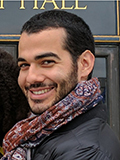 |
Simon Haziza
Research Scientist |
CONTACT |
|
How the brain's many different types of neurons synchronize their electrical dynamics to generate extended brain oscillations is a longstanding and important question. With my joint background in neuroscience and physics, I am developing and applying new ways to probe the brain's voltage rhythms by using genetically encoded fluorescent voltage indicators.
|
 |
 |
Oscar Hernandez
Research Scientist |
CONTACT |
|
The perception of objects may be encoded by the coordinated neural activity of only thousands of cells. Thanks to recent technological developments, we can generally access and manipulate such information optically. My research focuses on the development of innovative optical systems that may elucidate precise causal links between neural activity and the neural representation of objects.
|
 |
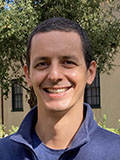 |
Omar Jáidar
Research Scientist |
CONTACT |
|
Motor learning reshapes the neuronal dynamics of different nuclei within the basal ganglia. It is hypothesized that repetitive exposure to a new motor challenge changes the communication across them, which in turn improves motor performance. Currently, my research combines multi-region neuronal imaging and manipulation in behaving animals as they learn a novel motor task with the aim of tracking changes and contributions from different microcircuits. |
 |
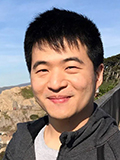 |
Tony Hyun Kim
Senior Engineer, HHMI |
CONTACT |
|
I am motivated by the possibility of uncovering hitherto unknown computational structures and concepts by careful experimental work in neuroscience. During my Ph.D. in Electrical Engineering, I developed novel optical technologies and applied them to the study of distributed brain circuits in behaving animal subjects. My current research combines multiple optical techniques, detailed studies of animal behavior, and quantitative modeling of circuits, with the aim of rigorously characterizing computational processes in the live brain.
|
 |
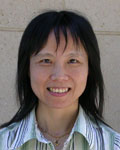 |
Jane Li
Life Science Research Assistant |
CONTACT |
|
I support the laboratory through a variety of research
activities involving histology, circuit tracing, genotyping,
husbandry, and surgery. |
 |
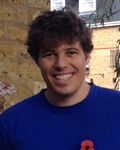 |
Thomas Rogerson
Research Scientist |
CONTACT |
|
Memories are often constructed from associations between diverse pieces of information that have no intrinsic connection. By studying how disparate pieces of information are stored in relation to each other, I hope to shed light on the mechanisms by which memories are linked in the mammalian brain. This will facilitate our understanding of how higher order knowledge is extracted from multiple memories. |
 |
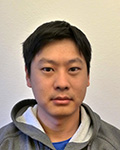 |
Albert Tsao
Research Scientist |
CONTACT |
|
I performed my Ph.D. research at the Kavli Institute in Norway with Edvard and May-Britt Moser. My present research examines how ideas and insights arise in the brain by using large-scale optical recordings to track the dynamics of large populations of neurons in behaving animals. |
 |
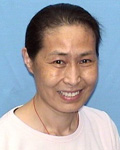 |
Yanping Zhang
Research Specialist III, HHMI Lab Manager, CNC |
CONTACT |
|
Work on rodent sugeries and viral vectors. |
| Medical Fellows |
 |
Adeeti Aggarwal
Stanford Ophthalmology Advanced Research (SOAR) Resident |
CONTACT |
|
I completed my MD/PhD at U. Penn. in 2023. My research there focused on understanding how activity across the visual cortical hierarchy is coordinated to process visual stimuli. I am a currently a resident in the Stanford Ophthalmology Advanced Research (SOAR) program and will continue dissecting the neural circuitry underlying perception, using both electrophysiology and the advanced imaging methods of the Schnitzer lab. |
 |
 |
Gaurav Chattree
Instructor, Movement Disorders Center, Stanford Neurology & Neurological Sciences |
CONTACT |
|
I am a Movement Disorders Neurologist at Stanford. I am interested in the neural circuits of motor learning and motor performance in animal models. I hope to use insights gained from these models to guide treatments in humans with motor control pathology, such as patients with Parkinson's disease. Before coming to Stanford, I earned my B.S. in biomedical engineering at U.Texas at Austin and my M.D. from at University of Texas Southwestern, where I studied the neural circuits of learning and memory in zebra finch songbirds. |
| Postdoctoral
Scholars |
 |
Marta Blanco Pozo
Postdoctoral Scholar |
CONTACT |
|
My interest lies in understanding how we learn and generate flexible behavior in complex and continuously changing environments. Building off my work at University College London, where colleagues and I identified reward signals in cerebellar cortex, and from my Ph.D. research at Oxford studying the dopamine system, I am studying how the basal ganglia, cerebellum, and cortical regions inter-communicate to support learning and adaptive behavior. |
 |
 |
Xiaochun Cai
Postdoctoral Scholar |
CONTACT |
|
I am fascinated by the intricacies of how the brain learns complex sequential movements and orchestrates them via the basal ganglia circuit and its motor outputs. This interest extends to understanding the changes in these neural circuits in neurological disorders like Parkinson's disease, tremor, and Tourette Syndrome. During my Ph.D., I delved into the role of thalamostriatal circuits in executing learned action sequences. Now, at the Schnitzer lab, I aim to explore the integration and interplay of various brain regions during the execution of learned sequences and throughout the learning process, by employing optical imaging techniques in conjunction with other methodologies. |
 |
 |
Xiqian Jiang
Postdoctoral Scholar |
CONTACT |
|
During my Ph.D. research at Baylor College of Medicine, I developed several reversible, ratiometric fluorescent probes for glutathione. Now I am interested in applying novel techniques, especially imaging and omics-based assays, to study the molecular mechanisms underlying learning and memory and diseases thereof.
|
 |
 |
Iason Keramidis
Postdoctoral Scholar |
CONTACT |
|
I am using voltage-imaging techniques to measure network dynamics of specific neuron-types across multiple brain regions during memory encoding. This work complements my neuroscience Ph.D. research, in which I identified alterations in synaptic transmission that are associated with aging and Alzheimer’s disease and that lead to memory loss and cognitive decline. |
 |
 |
Itamar Landau
Postdoctoral Scholar |
CONTACT |
|
Networks of neurons are complex dynamical systems with interactions across a broad range of spatial and temporal scales. As a Ph.D. student with Haim Sompolinsky at the Hebrew University of Jerusalem, I developed theoretical and computational techniques to advance our understanding of the relationship between connectivity structure and dynamical state in such networks. Now as an Urbanek Fellow postdoctoral scholar with the Schnitzer lab and theoretical neuroscientist Prof. Surya Ganguli, I am currently applying theoretical techniques to design and analyze experiments that exploit large-scale neural recordings, with the aim of elucidating the dynamical properties underlying neural computation.
|
 |
 |
Hansol Lim
Postdoctoral Scholar |
CONTACT |
|
I am interested in understanding how molecular changes alter neural circuits and their dynamics at a population level. As a postdoc in Schnitzer lab, and with our collaborators in Greg Scherrer's lab, I will focus on how neural circuit dynamics related to pain processing can be modified through molecular and cellular alterations. |
 |
 |
Junjie Luo
Postdoctoral Scholar |
CONTACT |
|
I am using genetic and optical tools developed by the Schnitzer lab to dissect and characterize the dynamics of the olfactory learning and memory circuit in adult Drosophila. |
 |
 |
Nicole Mercer Lindsay
Postdoctoral Scholar |
CONTACT |
|
Pain is a multifaceted experience that has a powerful influence on human and animal behavior. Understanding how diverse circuits interact is critical for identifying novel, non-addictive treatments for chronic pain. Working with our lab's collaborators, I use innovative viral tools and optical techniques developed in the Schnitzer lab to dissect pathway-specific contributions to pain and pain-evoked behavioral responses. |
 |
 |
Christopher Miranda
Postdoctoral Scholar |
CONTACT |
|
My postdoctoral research in the Schnitzer lab focuses on optical voltage imaging studies in behaving animals. |
 |
 |
Michelle Redinbaugh
Postdoctoral Scholar |
CONTACT |
|
I earned my Ph.D in neuroscience at the Univ. of Wisconsion, performing neurophysiological studies in non-human primates of the effects of anesthesia in the neocortex, thalamus, basal ganglia and other brain areas. Here in the Schnitzer lab, I am using the group's cutting-edge optical imaging techniques and mouse visual behavioral assays to study the biological basis for sensory perception at the levels of large neural ensembles and interactions between brain areas.
|
 |
 |
Yu Shikano
Postdoctoral Scholar |
CONTACT |
|
My studies in the Schnitzer lab focus on the neural control of movement and make use of our lab's cutting-edge optical instruments for imaging multiple brain areas concurrently in awake behaving animals. This approach builds on my experiences with electrophysiological and optical recordings in behaving rodents during my Ph.D. research (the University of Tokyo) and postdoctoral studies (Keio University, Tokyo). |
 |
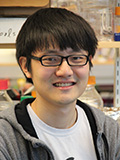 |
Xiaochen Sun
Postdoctoral Scholar |
CONTACT |
|
It has always been intriguing to me how the brain learns new information, skills, and knowledge in a complex world. By using large-scale optical imaging techniques to study the dynamics of neural ensembles involved in learning and memory, I hope to understand experience-dependent changes in the brain circuits and to uncover computational principles governing learning in neural networks. |
 |
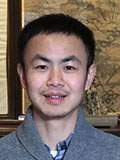 |
Lun Wang
Postdoctoral Scholar |
CONTACT |
|
It is challenging but fascinating to understand how synapses and neural circuits encode memories and process information for sensation, cognition and action. My research in the Schnitzer lab focuses on the dopamine system and the neural circuit basis of motor control and action selection. |
 |
 |
Seung Je Woo
Postdoctoral Scholar |
CONTACT |
|
I am interested in developing technologies that will lead to a better understanding of neural circuits in Drosophila. Specifically, I am creating machine-vision capable robots for manipulating fruit flies and compact microscopes for parallel, high-throughput brain imaging. |
 |
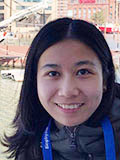 |
Peiyi Zhang
Postdoctoral Scholar |
CONTACT |
|
As a computational bioengineer, microscopist, and biophysicist, I am interested in developing computational and imaging tools to facilitate understanding of neural circuits, with a focus on improving the scope of optical recordings of neural activity and performing state-of-the-art experiments on brain dynamics. |
| Graduate
Students |
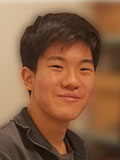 |
Ethan Cheng
Graduate Student |
CONTACT |
|
I am a Neurosciences Ph.D. student interested in developing experimentally verifiable, computationally tractable, and theoretically precise models of the brain, with a particular emphasis on cortical function. In 2021, I graduated with a dual degree in Biological Sciences (B.S.) and Computer Science (B.S.) from the University of Maryland College Park. |
 |
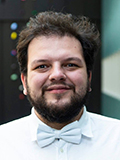 |
Fatih Dinc
Graduate Student |
CONTACT |
|
My interest lies at the intersection between neuroscience and computer science. Using machine learning methods and brain imaging data from mice, I aim to tap into the internal neural circuitry of the brain and understand the neural ensemble dynamics underlying memory formation and recollection in the short- and long-term. I received my undergraduate training as an electrical engineering in Turkey and my masters in theoretical physics in Canada. As an applied physics Ph.D. student at Stanford, I use a wide range of methods to tackle the interdisciplinary research questions we ask in the Schnitzer lab. |
 |
 |
Omer Hazon
Graduate Student |
CONTACT |
|
I am interested in understanding the emergent properties of large neural ensembles and the principles behind neural coding using imaging datasets and connectionist models. |
 |
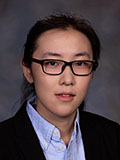 |
Yiqi Jiang
Graduate Student |
CONTACT |
|
I am an electrical engineering Ph.D. student and am interested in the dynamics of neural activity within and across brain regions as they relate to motor control, reinforcement learning, and brain-machine interfaces. My approach involves computational analyses of large-scale neural activity patterns, and I am especially interested in bidirectional approaches that take neural dynamics as inspiration for improving machine learning and robotics, as well as using methods from these engineering fields toward understanding the brain. |
 |
 |
I am a bioengineering Ph.D. student and am interested in uncovering the relationships between neural ensemble activity patterns in behaving animals and the macromolecular changes that support learning and memory. |
 |
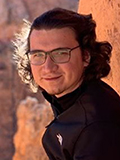 |
Vasily Kruzhilin
Graduate Student |
CONTACT |
|
My research interests are in advancing optical technologies for high-fidelity optical imaging and studying large-scale synchronous electrical activity in the mammalian brain. I am an applied physics Ph.D. student and use my training in laser physics and nonlinear optics at Moscow State University to work on interdisciplinary neuroscience research in the Schnitzer lab. |
 |
 |
I am using the unique optical imaging technologies developed in the Schnitzer lab to better understand the means by which the brain stores and recalls episodic and associative memories. In addition to memory, I am also interested in the neural basis for cognition and executive functions.
|
 |
 |
Elijah Paul
Graduate Student |
CONTACT |
|
I am an applied physics Ph.D. student working to develop real-time experimental techniques to study and modify neural activity in mice. I am interested in how underlying dynamical structures emerge in and across brain regions, and how these structures are affected by external factors such as brain-machine interfaces or disease.
|
 |
 |
Benny Weng
Graduate Student |
CONTACT |
|
I am an Applied Physics Ph.D. student who is interested in understanding the dynamics of large neural ensembles and how they shape the brain's computational prowess. Using a combination of optical and data analytic techniques, I am developing novel volumetric, two-photon imaging capabilities for tracking neural activity across the cortical column, a fundamental architectural unit of brain circuitry.
|
 |
 |
As an applied physics Ph.D. student in the Schnitzer lab, I am using adaptive optical techniques to enhance volumetric, laser-scanning two-photon imaging of large-scale neural activity patterns. |

